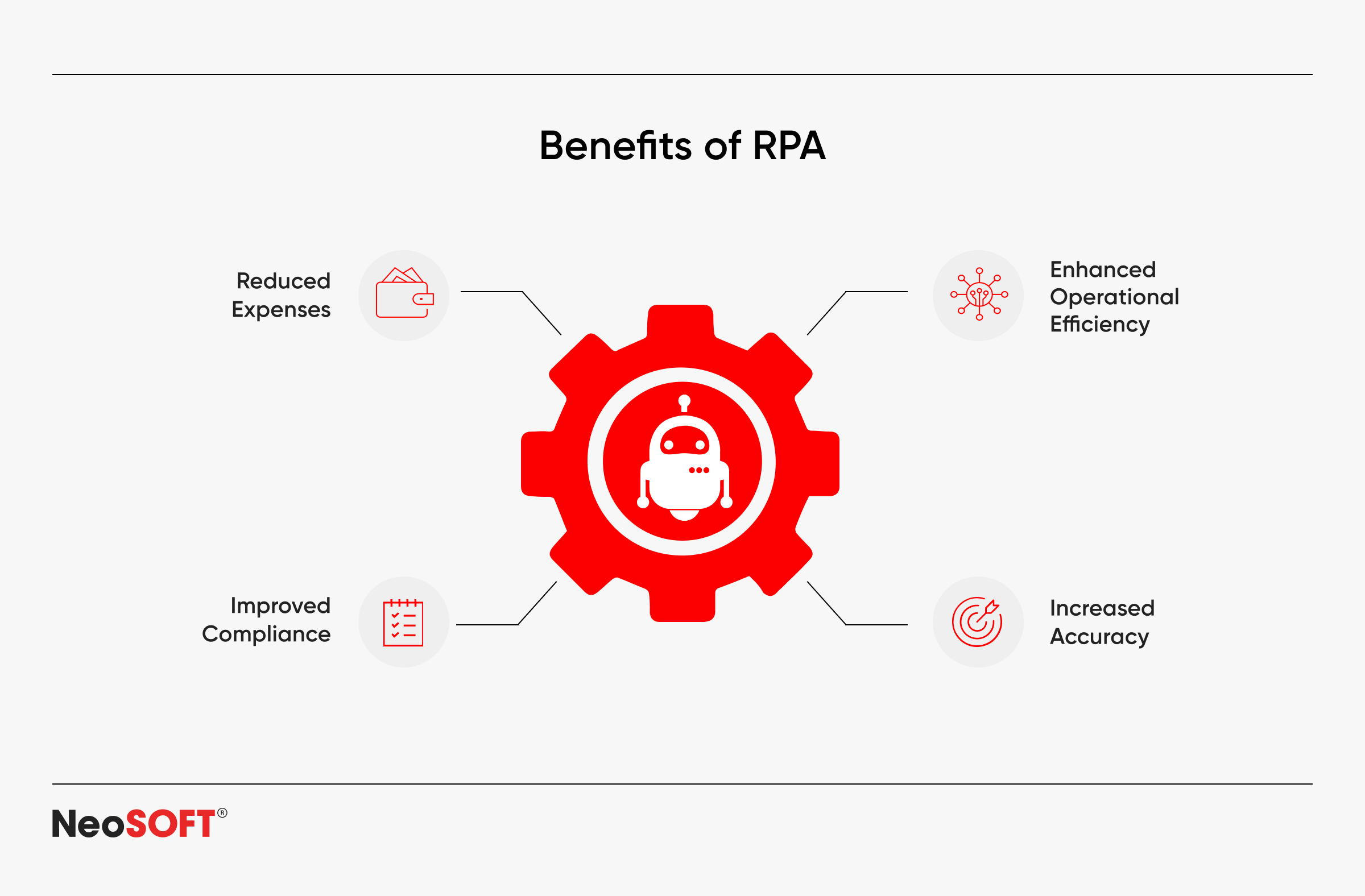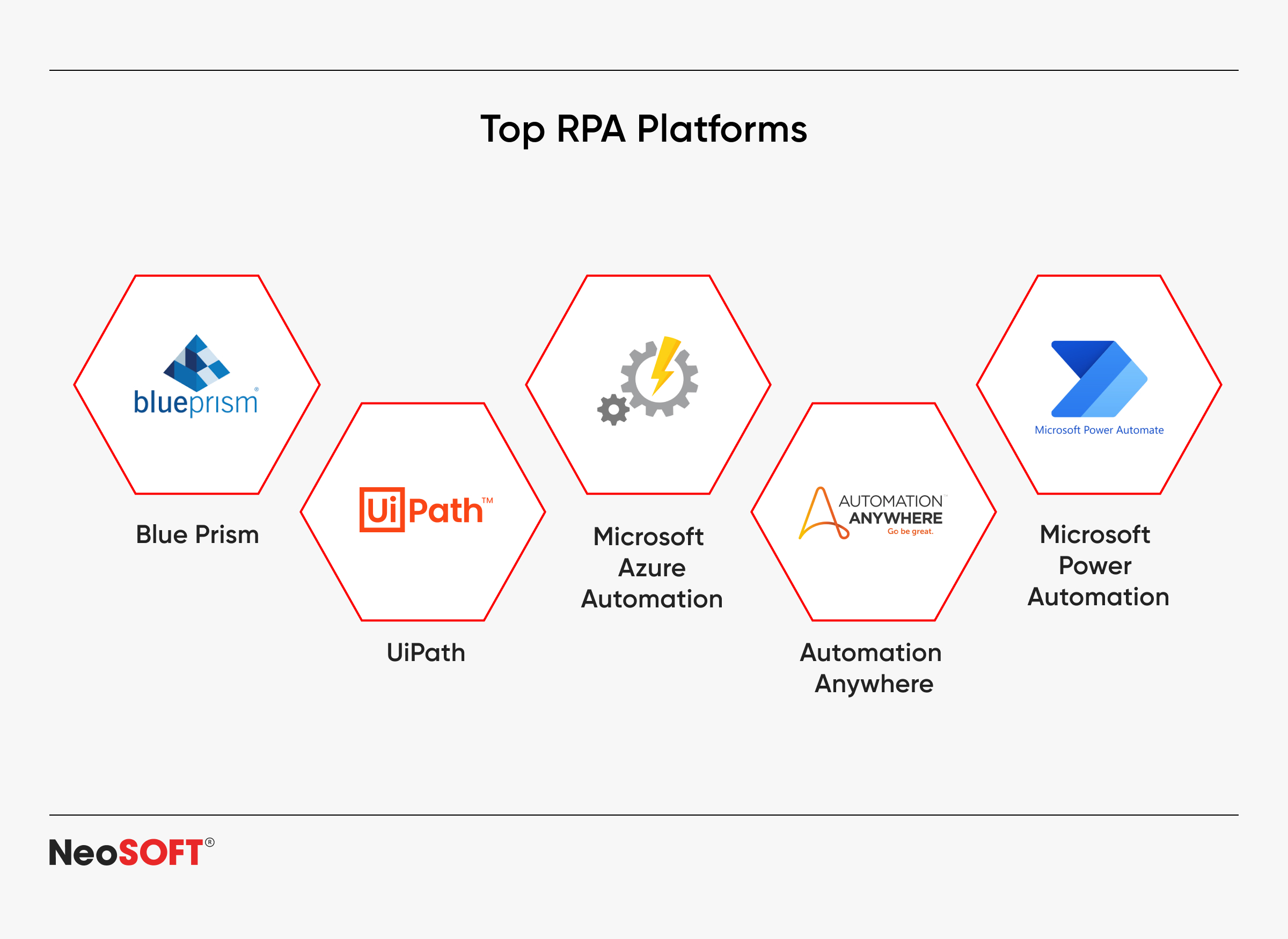Unleashing RPA: A Guide to Successful RPA Implementation
October 18, 2024
Introduction
By introducing cutting-edge automation technologies that streamline repetitive processes, robotic process automation (RPA) is revolutionizing the way businesses operate. It is an essential element for companies trying to boost productivity, reduce costs, and enhance accuracy. Businesses can increase their operational effectiveness while freeing up people for more strategic work by using software robots to automate rule-driven, repetitive operations.
An initial step toward greater automation possibilities with AI and ML is RPA implementation. With this automation software technology, organizations can automate not just easy repetitive data but also complex decision-making processes that focus on cognitive capacities.
This blog examines the typical problems that arise when implementing RPA, offers solutions for these problems, and examines how using an RPA tool can propel digital transformation. Whether you’re unfamiliar with RPA or trying to develop and improve your automation approach, this guide provides insightful viewpoints to help you manage the challenges and reap the rewards of this potent new technology.
The Basics of Robotic Process Automation
Robotic process automation (RPA) automates repetitive commercial operations that are typically performed by human workers by using software robots. Automated technologies surpass human abilities in terms of speed, accuracy, and consistency of work completion by interacting with digital applications and systems that bear similarities to human behavior.
With RPA’s assistance, organizations may automate tedious, manual, and repetitive tasks. This is a critical part of digital transformation. Through smooth integration with current systems, this automation not only optimizes workflows but also helps support more comprehensive digital efforts.
Routine functions, including data input, billing management, and report preparation, can be handled by RPA, which increases operational effectiveness and decreases error rates. Enhanced throughput, cost savings, and effortless operation scaling are some of RPA’s main advantages. A successful RPA implementation essentially serves as a core technology that can propel organizational transformation, creativity, and productivity.
Understanding the Value of RPA
Benefits of RPA for Optimizing Business Performance
Robotic Process Automation has significant advantages for firms seeking to enhance infrastructure, minimize expenses, and increase precision. These are a few of the principal benefits:
- Reduced expenses – RPA is an affordable technology that lowers operating costs by doing away with the requirement for manual labor. Businesses can save both money and time by using fewer personnel in typical functions like data input, payroll processing, and invoicing administration when they automate them. As a result, there are fewer errors, tasks are finished more quickly, and overall costs are significantly decreased.
- Enhanced operational efficiency – RPA helps firms run more efficiently by streamlining processes and optimizing resource utilization. Software bots may operate continuously without taking pauses, resulting in speedier task completion as well as more consistent output. This continuous operation enables firms to handle greater amounts of work with lower disruptions, thus boosting total throughput.
- Improved Compliance – RPA not only improves accuracy but also assures regulatory compliance. Automated processes follow stringent standards, making them perfect for sectors that must comply with changing legal and industry-specific requirements. RPA technology enables firms to avoid costly compliance violations by ensuring that all projects are completed in accordance with established criteria, protecting against regulatory penalties and reputational damage.
- Increased accuracy – By ensuring exceptional task execution precision, RPA bots dramatically lower the rates of human error. In industries with stringent rules like healthcare, financial services, and insurance, precise and legally compliant operations are essential. The implementation of robotic process automation guarantees adherence to industry standards in all processes. This lessens the possibility of sanctions for non-compliance.
The Impact of RPA on Progress and Productivity
RPA software can be said to provide an important contribution towards ensuring the optimal use of time and as well as human effort in organizations by automating repetitive tasks.
Optimizing Resource Allocation: Businesses may improve the way their personnel is deployed by employing RPA to tackle repetitive activities. Workers may be moved to higher-value processes that call for their ability to think creatively, analytically, and solve problems. Employees are better able to contribute to areas that bolster business growth and innovation as a result of this improved resource allocation, which raises production.
Automating Repetitive Tasks: RPA works especially well at handling repetitive, rule-based functions that would be challenging and time-consuming for employees to complete on their own. Not having to cope with tiresome tasks increases employee satisfaction and productivity. Automating routine tasks including invoice processing, data entry, and documentation can free up employees’ time for more strategic work.
24/7 Operation: RPA bots may operate continuously, unlike human laborers, guaranteeing a steady, uninterrupted workflow. Because of its 24/7 capability, work can be done more rapidly, more consistently, and without the need for human interaction. The constant state of readiness offered by RPA is particularly useful for enterprises that handle massive amounts of data or have multi-zone responsibilities.
Enhanced Data Management: RPA improves data management by automating information gathering, analysis, and processing. This improves reporting precision and expedites processes based on data. When executives have access to more relevant and accurate information, they may make better decisions that will improve overall business outcomes. Improved data management leads to improved risk and compliance management processes, which boost output even further.
Common Challenges in RPA Implementation
Selecting the Right Processes for Automation
One of the primary obstacles in an enterprise RPA implementation is determining which functions to automate. RPA is best suited for high-volume, repetitive functions that follow explicit standards. However, finding such duties across divisions can be challenging, particularly in firms with complicated workflows.
Solution: To maximize the advantages of automation, concentrate on time-consuming jobs with low strategic importance.
Not every task is appropriate for RPA. Some processes may require exceptions or sophisticated managerial decisions, rendering automation impossible. Evaluating job complexity is critical to avoiding costly implementation problems.
Solution: Organizations should evaluate each task’s guidelines, variability, and documentation to decide its suitability for RPA automation.
Securing Executive Buy-In
Without leadership support, RPA efforts will struggle to gain traction. Building a strong business case is critical for gaining leadership support. This necessitates presenting the obvious advantages of RPA, including cost savings, higher output, and consistency with the company’s strategic goals.
Solution: A clearly defined business case may emphasize RPA’s return on investment and value over time, making it simpler to get decision-makers’ support.
Managing Workforce Transformation
Employee resistance to RPA adoption is one of the most significant barriers. Many employees may view RPA as a danger to their jobs, resulting in an absence of support, training or cooperation.
Solution: In order to overcome this, organizations need to position RPA as an augmentation tool that increases worker output by automating repetitive and uninteresting jobs, allowing workers to concentrate on more important work. Effective communication and reskilling initiatives can help reduce resistance and build a collaborative atmosphere.
Cybersecurity Threats and Data Security
RPA implementations might pose significant cybersecurity threats, especially when working with sensitive data.
Solution: To address this issue, a company must establish tight security measures including encryption, protected user access, and continuous monitoring. RPA bots must be appropriately guarded against internal and external dangers in order to safeguard data integrity and avert breaches.
Aligning RPA Objectives and Business Goals
As companies evolve, so do their mission and objectives. Keeping RPA initiatives aligned with these aims is an ongoing challenge. This demands regular reviews and changes to RPA processes to ensure they continue delivering value.
Solution: Companies may optimize the effectiveness of their RPA projects by frequently monitoring automated process performance and aligning it with changing business needs.
Ensuring Compliance with Industry Standards
In businesses with strict legal requirements, making sure RPA procedures comply with all applicable regulations can be difficult.
Solution: Regular compliance audits, coupled with the involvement of legal specialists, can help an organization guarantee that the automated process complies with industry-specific standards such as GDPR or HIPAA. This proactive strategy reduces the chance of regulatory infractions while also ensuring the integrity of the RPA adoption process.
RPA Tools for Smart Automation Opportunities
Power Automate: Formerly Microsoft Flow, it is a cloud-based RPA platform that enables users to construct automated workflows between various apps without writing any code. Its goal was to give businesses of all sizes an easy and inexpensive way to use RPA to handle their company operations. It also makes it possible to integrate with the entire Microsoft ecosystem seamlessly.
Automation Anywhere: The complete RPA solution that uses artificial intelligence and machine learning to automate difficult business processes in multiple applications and interfaces. It is perfect for large-scale automation projects since it can manage complex workflows requiring cognitive abilities as well as straightforward, repetitive activities.
Azure Automation: A Microsoft Azure service used for hybrid environment update management, configuration management, and process automation services. Businesses can easily build, automate, and manage procedures across on-premise and cloud platforms thanks to its web-based interface. This makes it a powerful tool for big companies looking to optimize their operations on a wide scale.
Blue Prism: A highly adaptable RPA tool with an emphasis on security and compliance. It offers software robots made to automate commercial processes completely based on specific rules. Businesses in highly regulated sectors can benefit from its focus on integration with current internal systems, security, and management practices.
Ui Path: Bot development is made easier using UiPath, an RPA platform that incorporates AI and computer vision into the back-end process as well as the UI. Enterprises wishing to automate server-side and front-end tasks highly value it for its scalable and adaptable interface.
RPA in the Future: Emerging Trends and Automation Opportunities
Low-code/No-code RPA Systems
Automation is now more accessible to a broader range of users, including non-tech individuals, due to low-code/no-code RPA technology. These platforms enable personnel from different divisions to create and execute automated solutions without needing an advanced level of coding expertise. By democratizing automation, enabling departments to automate tasks, and rapidly expanding their RPA projects, businesses may quicken the pace of digital transformation.
Ethical considerations in RPA implementation
As RPA advances and is progressively incorporated into business operations, it becomes more and more important to take ethical issues into account. To appropriately protect sensitive data and satisfy legal obligations, businesses must prioritize security and adherence to rules and laws.
Augmentation technologies like RPA free up staff members so they can focus on more critical work. It is in no way a replacement for the inventiveness and ingenuity of people. Careful supervision over how the workforce responds to RPA is also necessary. RPA can benefit both employers and employees, but only if it is used in a mindful and ethical manner.
Embracing Intelligent RPA Technology
Robotic process automation will require the use of two advanced automation technologies in the future: artificial intelligence and machine learning. As these technologies advance, RPA must be capable of managing tasks that become more complicated and require advanced decision-making and improved process optimization. This move toward intelligent automation is predicted to transform company procedures and promote increased productivity and creativity.
Conclusion
To summarize, successful robotic process automation adoption requires solving many important difficulties, including selecting the relevant processes for automation, connecting RPA projects with overall project objectives and business goals, and getting stakeholder backing. Overcoming these challenges requires an execution plan that includes comprehensive process evaluation, developing a strong business case, and assuring ongoing alignment with company goals and business needs.
A number of business processes across sectors will soon require RPA implementation since it increases output, reduces expenses, and enhances operational efficiency. Future innovation and sustained corporate success will be significantly aided by RPA as more companies make use of smart automation options.
Contact our team of professionals today for a customized roadmap to leveraging the full potential of RPA technology and transforming your organization through seamless automation! Find out how we can help you increase output, reduce expenses, and expedite your digital transformation. Contact us today at [email protected], and let’s start your RPA journey together!





















